Write in form because you ARE form.
I can't get it any simpler.
Top of the morning from the bottom of the night.
I’ll begin these last sessions of the Conference with a paper I wrote for a fine new poetry magazine, The Alchemy Spoon.
This is yet another* in a long series of magazines founded by folks who all worked with me at the Poetry School. In this case the founders were the poets Roger Bloor, Vanessa Lampert and Mary Mulholland, who are now joined on the board by fellow-poet and Poetry School alumna Diana Cant.
*I say ‘yet another’ - what I mean is The Alchemy Spoon is one, and Black Iris is the other, but these are sources of considerable pride, so it feels like a large number to me.
[One tree, and yet another tree.]
Here’s the link…
It’s a superb magazine which I recommend with delight. Here’s my article.
***
Words on Silence.
I write Words on Silence at the top of the page, and already the joke is made, the silence gone, the white space beginning to crack up and burst into laughter.
White Space, written in black and therefore the negation of what it signifies, is what I like to call it, meeting the eye as silence meets the ear.
My whole life I’ve felt animation in inanimate things. Maybe everyone does – I don’t think everyone does – but surely all poets do. I open the cutlery drawer and there’s the knives and forks and spoons and teaspoons still quarrelling over which tool is most helpful to me. I choose the ones I need and shut the drawer on the disappointment of those I don’t. If I’m open and energetic enough, everything is doing this all the time. Everything feeling something.
The philosopher-scientist Iain McGilchrist tells us that it’s possible, briefly and without damage, to shut down either side of the brain. Sometimes this is medically called for. The experience of stroke victims provides further evidence: when only the left side of the brain works things are nothing but tools, they mean nothing beyond their basic use. When only the right side works everything seems alive. Well I understand that, it’s how the world feels to me when the light is right. I’m not disrespecting my left side: I do know what knives and forks do when they’re not calling out to me to love them more.
But it was only when the white space itself came alive that I attained a deeper understanding of how poetry works. It’s a craft of two equal media: something and nothing, colour and white, utterance and silence.
The important word in that sentence is equal. Form in poetry is not a negotiation with the past or with form’s history; it’s a stand against nothing, and by standing it makes nothing come alive – a phrase which also means it makes everything come alive, if one needed evidence that language can turn helpless in the face of nothing.
Because regularity in poetry, in lines or stanzas or whatever, both forms the white space and is formed by it. About regularity I always say: your poetry cannot be freer than you are. It must partake of form as it partakes of nature: heartbeat, breath, footsteps, energy, fatigue, night and day, the four seasons.
This is the argument for form. It doesn’t mean write in the old forms. It means write in some form because you are form.
Your world is, was now, is always.
If you write in stanzas, which if you want to learn you should, then you are approximating the form of footprints, marks made by creatures on snow or sand or mud. Marks not identical, but appreciably made by the same creature: this is another way of saying that a poem should have coherence, its first line and last line and everything between should appear to have emanated from the same life-force. A poem of voices, or sections, might have other rules, but the principle holds. I think all poems that outlive their makers have this creaturely quality.
If the poem is in stanzas – even irregular ones – then you’ve arranged the silence/space into stanzas too. Mist your eyes on a poem to see what I mean. You can also see that the poem is a temporary stay against that silence: I mean, the white space towers over and wins at the end. Your day will end in sleep, and the metaphors write themselves while you’re gone.
[Your nemesis winning again.]
A well-chosen form not only forms the space, it characterizes it.
It becomes a medium to push through, the snow or sand or mud that the creature must run or hop or crawl through to safety. See the end of a poem as a haven, a burrow, a den, the sea, the dark woods, your own kind, safety from predators, hunger, confusion. Raise the stakes that high. If you’re a poet and you’re writing a poem, why shouldn’t they be high? This is all you do. Once you’ve started on the page, this is all you have and all you are.
Between writing On Poetry in 2012, which is where I first dwelt on these things, and writing Silly Games To Save The World in 2023, in which I developed them, something about the white space changed in my sight. Its pressure rose, it grew in power, its whiteness became blinding. This may be about climate change or the fragility of the democracies we all grew up trusting – as I say, the poles and the polls, and I write this literally on American Election Day, so the ramparts of the castle will have held or fallen by the time you read this [as we know, they fell] – but of course it is also age, the amplification of the clock ticking.
Silence is becoming louder. Silence in the face of the melting glaciers or looming fascism is deafening.
Which is why I say make forms. In fact I say faums, but you’d have to read Silly Games to get what I’m on about. In brief it’s this: at the start of every poetry course I teach, I ask poets to imagine that, for some arbitrary reason, they can only write in one single form for the rest of their lives: maybe sonnets, tercets, ballad-rhyme, sestinas, triolets, haikus, anything. What would they choose? Then I point out that this was literally true of Emily Dickinson: that four-beat/three-beat off-rhymed thing she does forever.
A Route of Evanescence, With a revolving Wheel – A Resonance of Emerald A Rush of Cochineal – And every Blossom on the Bush Adjusts it’s tumbled Head – The Mail from Tunis – probably, An easy Morning’s Ride –
That was her faum. A faum is an idealized thing. It’s very hard to catch, that’s why it looks like faun, it scares easily, it hides in the woods. It is what of you that might withstand the silence. The cold, the loss, the oblivion, whatever the white space means to you.
What form of you is best equipped to exist in this hostile element?
From about that point in the piece I started longingly to gaze at the white space at the end of the page, hearing the silence rise to take me in, it’s asking me So do you have any other words to say on silence? and it’s trying to keep a straight face. And here it comes, the silence. Not untrue of course but, pace Philip Larkin, not unkind either.
***
Here are two more excellent contributions to the Conference on Poetry and Psychotherapy…
I’m not sure what the technical definition of a gentleman-farmer is, but Miles Gibson is a gentleman and a farmer, so that’s good enough by my lights. He’s also a fine poet of modern georgics, in his final term at the School, and this is he:
‘I thought I’d respond to your call and share my version of the sibling rivalry Louise [Ordish, whose question kicked off the Conference if you can remember that far back!] named between therapy and poetry. For me it’s not just the energy required for both that clashes, nor the slightly more reliable source of validation therapy delivers. Also, it’s about a different relationship to the world.
Am I approaching this situation, this relationship, as a freewheeling cavalier poet without agenda or a doughty roundhead helping people to revelation?…’
Glyn interrupts: Loving poets as Cavaliers and therapists as Roundheads! I’m always up for a Civil War reference - why should we have got over ours? America’s so NOT over theirs they’ve started it again - anyway Miles firmly moves Poetry and Therapy to two different hills…
[A hill, and yet another hill.]
And continues:
‘As a therapist there are treatment goals established with the client. We are trying to work things out - unravel, spell out in black and white via interpretations. Sometimes more poetic metaphors will be used, always how I am with a client will be considered. As a poet there is more licence to play, goals can hamper this, not to mention the responsibility to please another or facilitate a coherent explanation.
‘If I integrate my therapy self into my poetry self what trite and preachy voice will emerge? If I integrate my poetry self into my therapy self, how long before the BACP ethics committee finds me out?’
I couldn’t agree more. As the conference has gone on, it’s become increasingly clear to me that we need daylight - rational revelatory daylight - between the writing of poetry and the application of psychotherapy. The fascination for me is in the connections between the teaching of poetry and the application of what Freud called the talking cure*.
[*Freud wasn’t first to call it ‘the talking cure’, she was, and her name wasn’t ‘Anna O’ it was Bertha Pappenheim.]
That wasn’t meant as a clumsy way to bring the wonderful poet Annie Freud to the conference - though it seems to have worked - but her contribution is directly relevant here:
‘This is a subject that interests me very much. I find that it matters a lot to me to avoid making lazy assumptions. I become suspicious when I hear claims being made which imply a relationship between the two arts/disciplines/practises that is somehow intrinsic or that poetry has a therapeutic effect. Poetry has also a relationship with music, to dance, to history, to visual art, to philosophy, to manners, to the way in which national cultures are formed and expressed, etc. Why is there such emphasis on bringing these two more closely together? And Why now?
But I am aware that the practises of teaching and learning poetry composition has an important kinship with the experience of being a patient or therapist.
And can cite many examples of this phenomenon. That there are poets whose work stimulates a psychoanalytic interpretation. That the impact of a poem on the reader can have a kind of ‘thunderclap’ effect comparable to that of a ‘breakthrough’ moment in the consulting room. That the relationship between poetry student and teacher and that of patient/client can have interesting similarities…’
***
Kinship - exactly. Set the realms of poetry and psychotherapy apart in order to see how light can shine between them, or the light from one cast shadows in the other. But do set them apart.
There are many lights and many shadows, but here’s a connection I sense, and I bring it from poetry.
I can’t, yet, bring from psychotherapy, but I’ve been reading into my future, like a moth sensing lamps it’s attracted to. Here’s Thomas Ogden interpreting Wilfred Bion. Bion’s is quite an extreme point - the antipodes of, say, a classic Freudian exploration - but worth hearing if only for that. This is about the psychoanalytic session, but bear poetry in mind, and think of the ‘patient’ as the poem:
‘Bion insists that, as psychoanalysts, we must shed the desire to understand, and instead engage as fully as possible in the experience of being with the patient. We must “cultivate a watchful avoidance of memory” because memory is what we think we know based on what no longer exists, and is no longer knowable. And we must renounce “desires for results, ‘cure’ or even understanding”. Both memory of what we think we know and desire for understanding of what has not yet occurred (and consequently is unknowable) are a “hindrance to the psychoanalyst’s intuition of the reality [of what is occurring in the present moment of a session] with which he must be at one.’ [Thomas Ogden, Coming to Life in the Consulting Room]
***
I make no notes for poems. Of course I note facts - for example with the Endangered Creatures poems, when facts are in Frost’s words ‘the sweetest dream that labor knows’ - but I take no sense of form into a poem, no phrases, no lines, no ideas, nothing. I call it the ‘Walled Garden’ -
Only once I pass through the gateway of the first words can anything grow: sound and meaning and visual effect will combine to make the thing bloom. Things will go right or wrong thereafter, but nothing grows that was not planted. All around, beyond the walls of the garden, is irrelevance, oblivion. What is hoped for is a deep intensification of the Present - rather like Bion’s sense of how a session should be - with past and future set aside for now. Literally for Now. And that’s enough for now. Happy Easter.


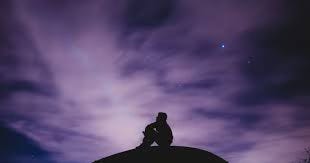
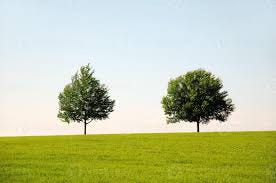

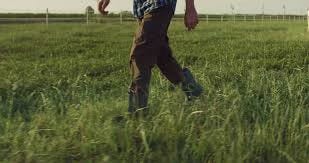
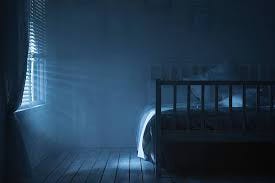
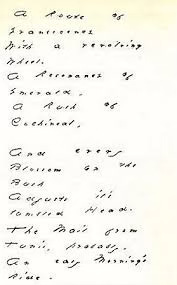
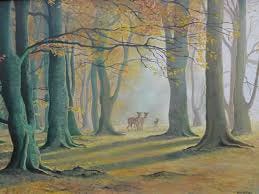


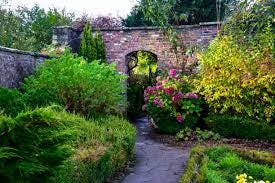
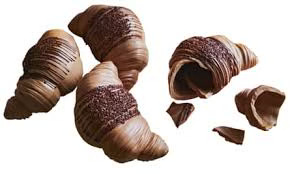
Just found this on The Humanities Library:
(Bach and Mozart) never sacrificed form for expression. As high as their expression may soar, their musical form remains supreme and all-sufficient.
Camille Saint-Saens
Wow! That’s a lot and I feel all echoey!